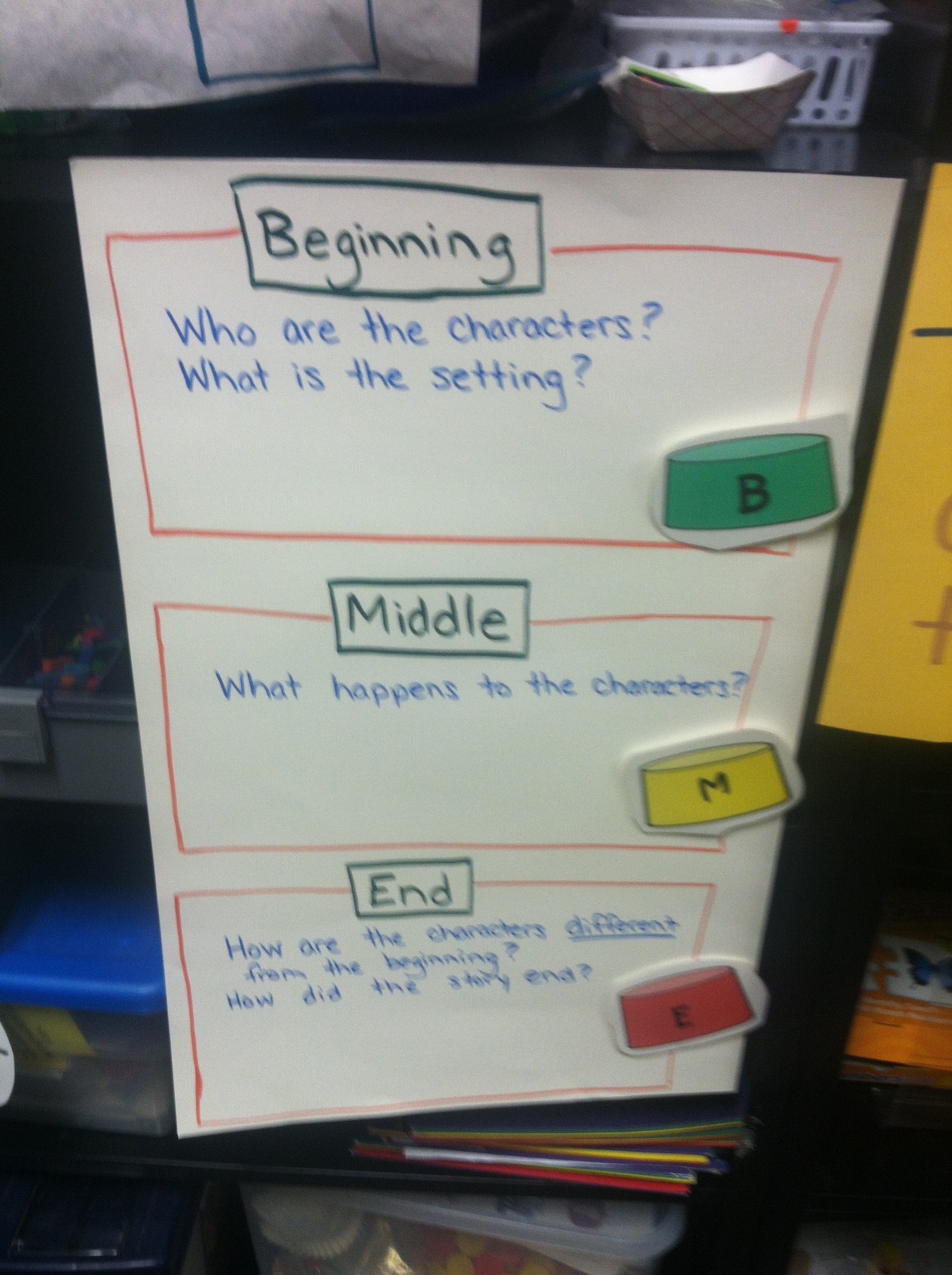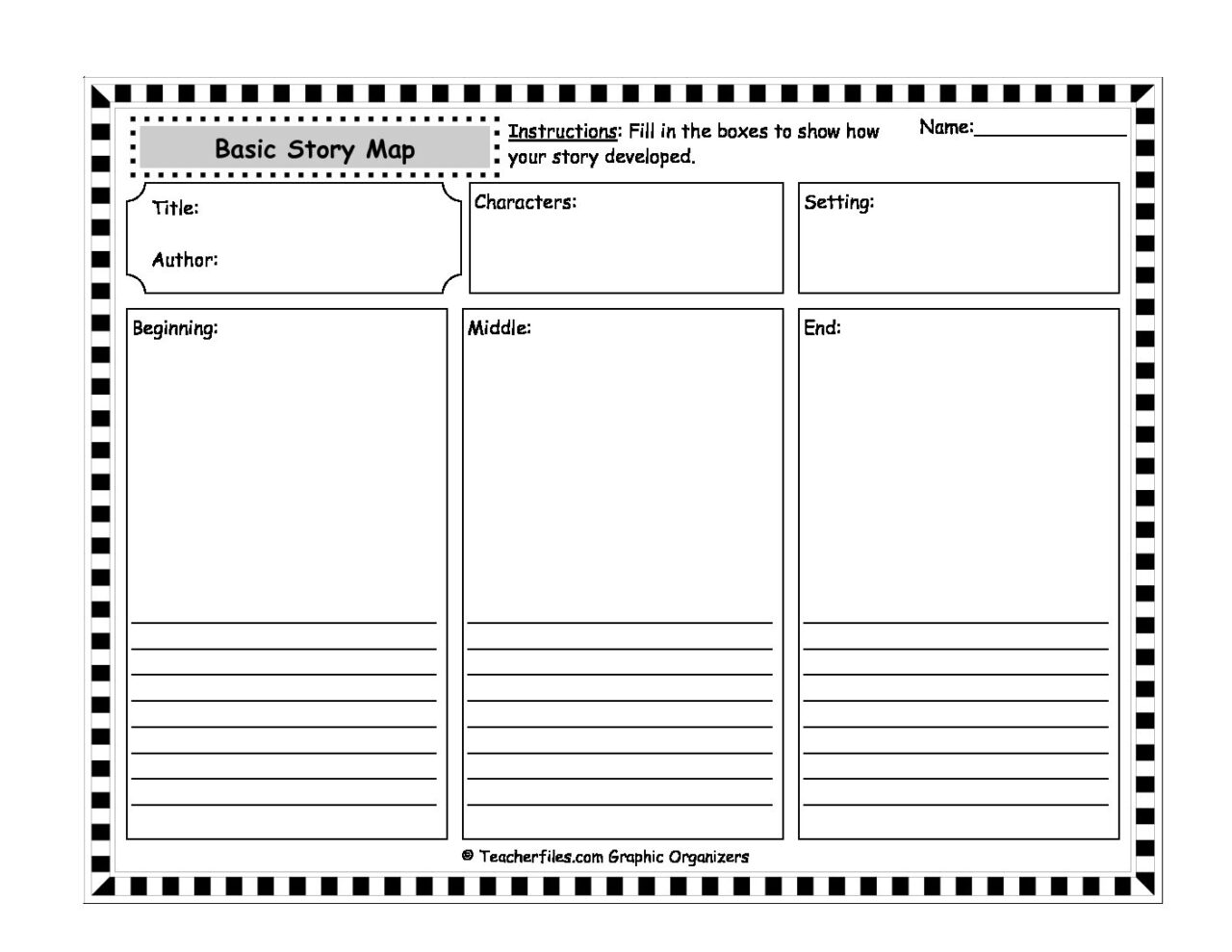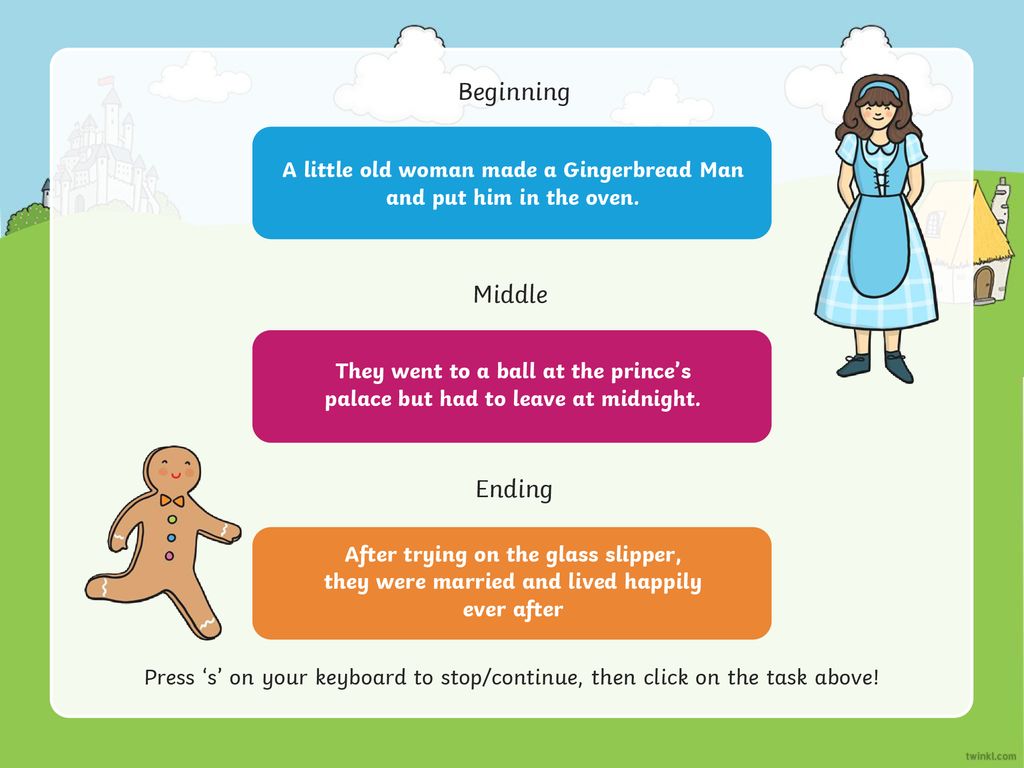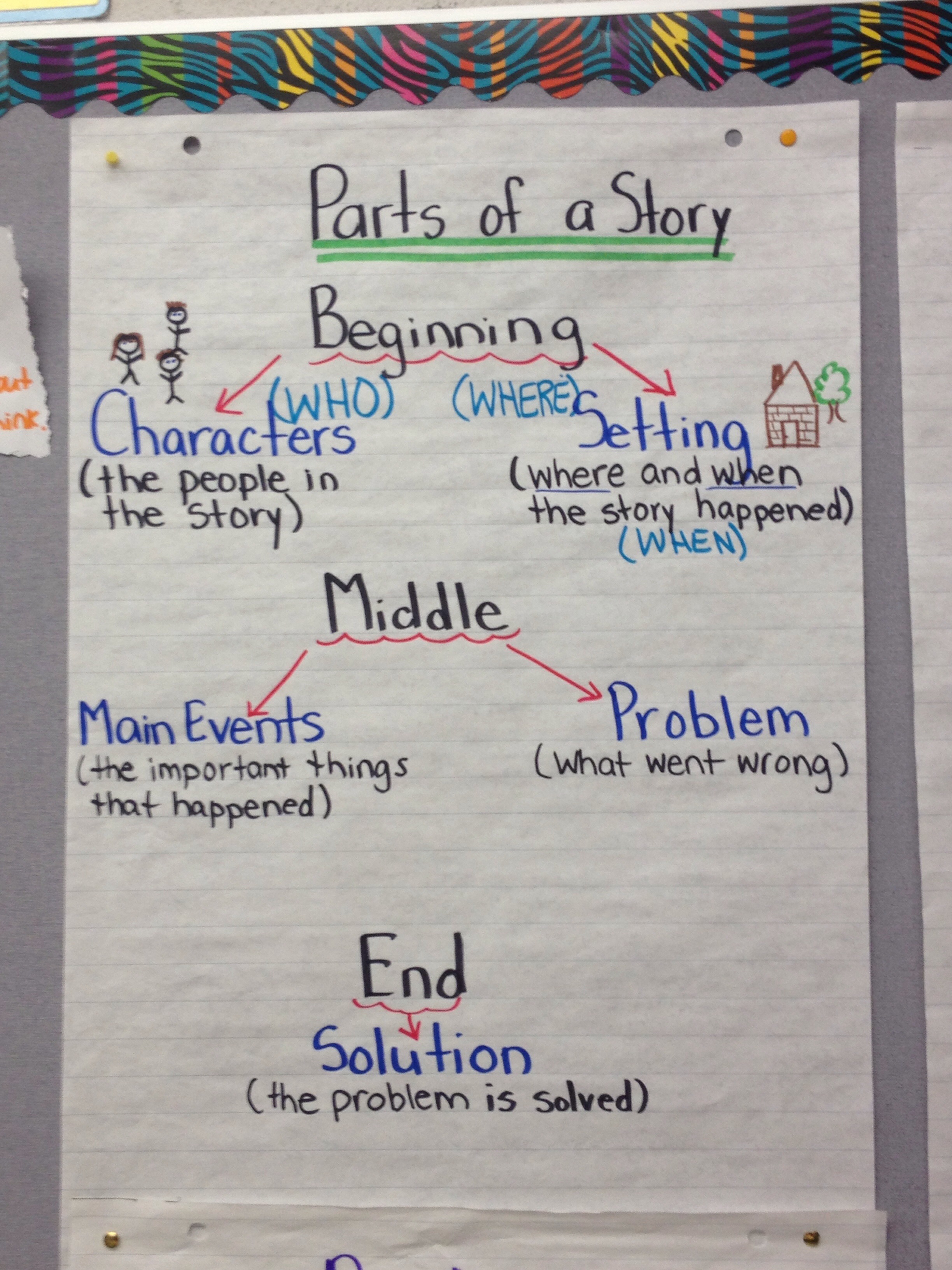Beginning Middle And End Of Story – When teaching Kindergarten, we find it’s best to use the beginning, middle, and end of a story instead of the plot. We use problem and solution instead of conflict and solution.
We begin by teaching our students about the beginning, middle, and end of a story. When we read a story, we first stop after reading and ask them what happened in the story so far. We tell them, “This was the beginning of history.” We keep reading and stop again before reaching the end, “That was the middle of the story. The middle part of the story is the longest part. What happened in the middle of the story?” We help them sequence the events they tell us. Finally, we read the end of the story and discuss the ending with our students. We often use sentence starters to help guide their discussion.
Contents
Beginning Middle And End Of Story

After reading several books and discussing beginnings, middles, and ends with students, we use a graphic organizer to draw and/or write the various parts. We always do this before our students do it on their own. As we read the book, we stop after each chapter, discuss with them, and then draw our graphic organizer before reading the next section. Being able to tell a story in order is a great concept for preschoolers, so we do this activity several times a month throughout the year. At the end of the year, after we read the story, the students fill out the worksheet themselves.
Guidelines For Submitting A Yes Story!
Students usually understand the characters and setting very quickly, but it is still important to review. We do this by reading a book and telling our students that the characters are the people and/or animals in the story (or things that talk about something). We tell them where the characters in the story are set; (Are they in? Are they out?…) Using symbols and worksheets can help you make sure students understand these concepts. Some of the books we used as highlight settings were David McKee’s Elmer (jungle setting) and Marcus Pfister’s The Rainbow Fish (ocean setting).
The problem and solution of the story are taught when the beginning, middle, and end are taught. Usually we teach our students the problem seen at the beginning of the story. As such, resolution is usually found at the end of the story.
After teaching the 5 story elements, we spend several weeks comparing different versions of the same story to make sure our students understand all the elements. Our favorite picture books for teaching story elements are The Three Little Pigs and The Gingerbread Man books. There are different versions of these two stories! We’ll start by reading the regular version of The Gingerbread Man, covering all five episodes. The next day we come up with another version of the same story and talk about the similarities and differences. Our students loved reading the different versions! After reading all the stories, our students chose their favorite version.
When we compared stories, we used a story element anchor chart to list the elements. This helped us see the similarities and differences between the stories we were reading, but it also helped the students reinforce their knowledge of story elements. We didn’t cover every episode, but we certainly covered them.
Friday, March 9th
This Jack Hartman video is great for teaching story elements. Your kids will be singing in no time!
Plot elements are often called textual features of fictional texts. Our blog, what are the text features? How to teach children explains all the features of the text and describes the difference between the two words.
Parts of a preschool book go along with this blog. It’s also an important concept for teaching preschool, and we explain how we taught it!

Depending on the grade level you teach, there may be different sections of a book that you cover during your lesson. This blog is great
Visible Thinking Routine Of The Week: Beginning Middle End
When people refer to textual elements, they are mainly talking about the features of academic texts. However, fiction books also have textual characteristics. It is important
We use cookies to ensure that we provide you with the best experience on our website. Do you accept cookies from our website?Yes No Privacy Policy Teaching the beginning, middle, and end of fiction can be fun when you use a Wine Dog! The beginning, middle and end were recently worked on. As we read the story, I told the children to discuss which parts were at the beginning of the story, which parts were in the middle, and which parts were at the end. I showed them a picture of a hound and talked about how the head and tail are short, like the beginning and end of a story. The dog’s body was long, just like the middle of the story.
After reading the entire story, I asked the children to think about what happened at the beginning of the story. I made them turn around and talk to their elbow partner. When they spoke, I “listened” to see what they were saying. I called them back and quickly summarized what they had heard. I repeated this process at the middle and end of the story.
Later in the day we used interactive writing and wrote what happened at the beginning, middle and end. When I called on the children to help write on the board, each child had their own recording sheet to fill out.
Beginning Middle End Graphic Organizer Examples
This is the updated version. I also added an unlined page. It’s a great way to document the beginning, middle, and end of a story. This is from the Reading is Fun unit.
In the third session I read each passage aloud to the children. Each time I asked them if it was the beginning, middle or end of the story. Each time we returned to the text to find evidence to support our answers.
After reading each part, children put their hand on the head if they think it is the beginning of the story, on their stomach if they think it is the middle of the story, and on the “tail” if they think it is. That was the end of the story.

Then we gave the kids pieces of paper and their cutouts to make their own dogs. No patterns….use your brain and think of how to cut paper to make a dog! They taped their beginning, middle, and end recording pages to the dogs’ backs.
Easy Steps To Teach Story Grammar Elements In Narratives
I recently made an interactive post-it board module. I love how easily I can make this chart and use it over and over again. Then simply record part of the story. Read each passage and ask the children to tell you whether it is at the beginning, middle or end of the story. Go back to the text to find evidence to support your answer. A few weeks ago I blogged about teaching story episodes and answering questions. The last project I mentioned was this anchor chart for connecting story elements at the beginning, middle, and end.
Which I totally stole from first grade. I hate to say it, but her poster is so cute!!! I forgot to add some of the information she included (now I wish I did!). I could do the whole She-Bang again!
*Please do not pin this graph from my blog. Please click on the image to embed it from the original page. It will give credit where credit is due. Thanks!
She also has a FUN graphic organizer that we use in our listening center. This is a free item in her TpT store and matches the anchor card!
Digital Story Map Graphic Organizer Beginning Middle End
To make this, students will need one sheet of 8 x 12 inch construction paper, three index cards, and one sheet of this printable (I cut the sheet in half “hot dog style” so the sheet is actually for two students).
To make the actual “wallet” I folded a small section of tissue paper (not halfway) and stapled the left and right edges. Then I folded the paper in thirds like a man’s wallet. Students glued the labels from the top printing plate.
Students wrote the beginning, middle, and end on index cards (like a credit card!) and then sorted them into the correct pocket. If students have time, they could draw pictures on the back (blank side) of the index card. The book we used

We only read one of the short stories (Spring I think) and used it to write a beginning, middle and end. I was afraid that my children would get confused because they had a collection of stories, but I was surprised when they followed the instructions and wrote about the correct story. Yahoo! I would say, I can pick one
Story Maps & Comprehension
Beginning middle and end, beginning middle and end lesson plan, story beginning middle and end, beginning middle and end graphic organizer, beginning middle end worksheet, arabic letters beginning middle and end, short story with beginning middle and end, beginning middle and end organizer, beginning middle end anchor chart, story map beginning middle end, beginning middle and end of a story for kindergarten, beginning middle and end of a story worksheets
